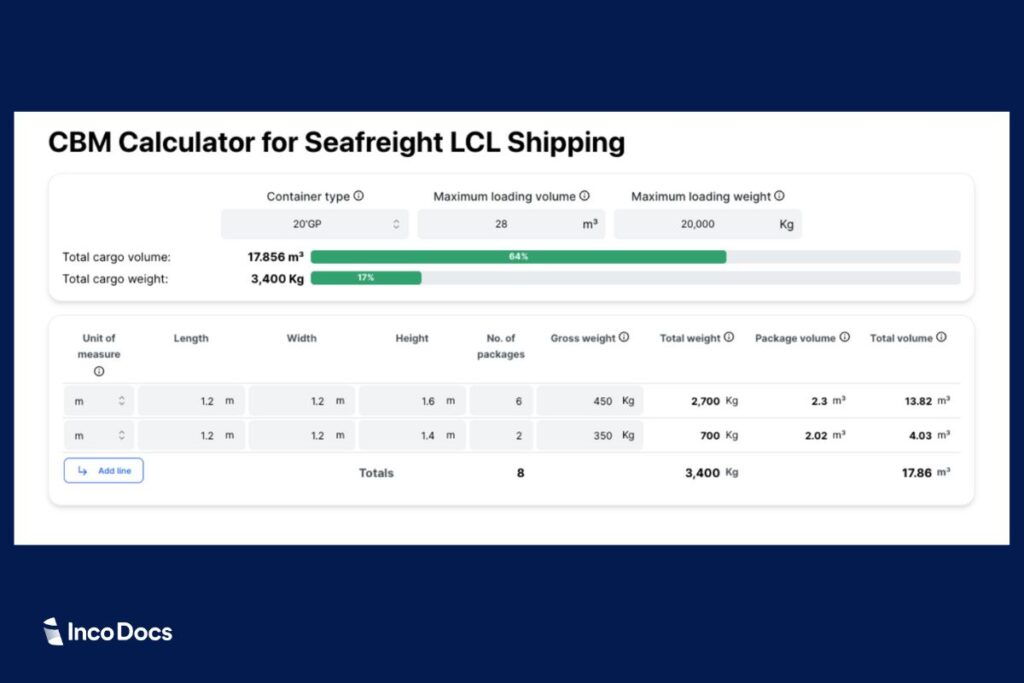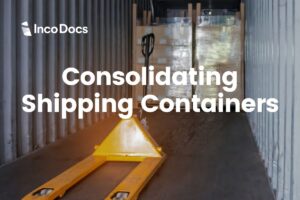What is Container Loading?
Container loading is an important step in global trade. It involves packing goods into shipping containers to ensure they are secure and protected during transit. Improper loading can cause goods to shift or get damaged inside the containers, leading to increased costs and delays. Proper loading prevents these issues and ensures smooth and efficient transportation through the supply chain.
Containers are designed to be versatile and durable, capable of carrying a wide range of cargo, from electronics to machinery. Efficient container loading maximizes space and minimizes damage, which affects shipping costs, delivery times, and cargo safety. Given the various conditions containers face during transport, including rough seas and long journeys, proper loading is essential.
Basic Rules for Loading a Container Properly
Loading a container requires careful planning and adherence to basic rules. Start by inspecting the container to ensure it is clean, dry, and free from damage. Any issues can lead to problems during transportation, disrupting the supply chain. Distribute weight evenly by placing heavier items on the bottom and lighter cargo on top. This helps maintain balance and prevents shifting.
Use dunnage, such as airbags, foam, or wood, to fill empty spaces. This keeps the cargo from moving. Stack boxes in an interlocking pattern to distribute pressure evenly and maximize space. Secure the cargo using straps, load bars, and bracing to keep everything in place. Proper securing methods reduce the risk of damage.
Different types of packaging for export can be seen here
Planning the Loading Process

Effective container loading requires careful planning. Start by creating a stowage plan, which details the placement of each item within the container. This helps maximize space and maintain balance.
A good stowage plan considers the weight, size, and type of cargo. Place heavy items at the bottom and lighter items on top. Use pallets to organize better. Ensure fragile items are positioned safely to avoid being crushed.
Utilize our CBM (cubic meter) calculator to measure the volume of your cargo. This tool helps you determine the space your cargo will occupy and estimate freight costs. Efficient use of container space keeps overall costs low. By planning the loading process and using a CBM calculator, you can optimize space effectively.
Using 3D container load planning software revolutionizes how businesses optimize the loading of shipping containers. It provides a visual, interactive model that allows shippers to maximize space utilization. Container loading software accounts for product dimensions, weight limits, and stacking rules, reducing the risk of damage and minimizing wasted space.
Handling Different Types of Cargo
Different types of cargo require specific handling techniques to ensure safe transport. Each type has unique needs, making it crucial to understand these requirements for effective container loading. Some examples include,
Electronics
Electronics are sensitive and need extra protection. To safeguard these items:
- Use ample padding, such as bubble wrap or foam.
- Secure the items firmly to prevent movement during transit.
- Consider climate control options if the electronics are sensitive to temperature changes.
Large Machinery
Large machinery poses a different challenge. To handle these items:
- Anchor the machinery firmly to the container floor using straps or chains.
- Use blocks or braces to prevent any shifting.
- Ensure the machinery is well-balanced to avoid tipping over.
Hazardous Goods
Handling hazardous goods requires strict adherence to safety regulations:
- Properly label and package these goods according to legal requirements.
- Separate hazardous goods from other cargo to prevent contamination.
- Follow all safety guidelines to avoid accidents and ensure compliance with regulations.
Fragile Goods
Fragile goods need careful handling to prevent damage:
- Use sturdy boxes and plenty of cushioning materials like foam peanuts or air pillows.
- Place these items on top of heavier cargo to avoid being crushed.
- Clearly mark the boxes as fragile so that handlers are aware and take extra care.
Perishable Goods
Perishable goods, such as food items, require specific conditions to stay fresh:
- Use refrigerated containers to maintain the necessary temperature.
- Pack items in insulated containers or use cooling packs.
- Ensure the items are delivered quickly to avoid spoilage.
Liquids
Transporting liquids involves special considerations:
- Use leak-proof containers and seal them properly.
- Secure the containers to prevent spills or leaks.
- Be mindful of temperature and pressure changes that could affect the liquid’s integrity.
Bulk Materials
Bulk materials like grains, coal, or sand need specific handling:
- Use appropriate bulk containers or sacks.
- Ensure the cargo is evenly distributed to maintain balance.
- Take measures to prevent shifting during transit.
By understanding and applying these handling techniques, you can ensure the safe and efficient transport of various types of cargo.
Adhering to Container Loading Regulations
Following container loading regulations is essential for safe and efficient shipping. These rules ensure that goods are transported securely and help prevent accidents during shipment. The shipper must comply with regulations like the CTU Code and SOLAS requirements.
The CTU Code, or the Code of Practice for Packing of Cargo Transport Units, sets the guidelines for international shipping standards. It provides comprehensive instructions on safe packing and securing of cargo. Adhering to these standards reduces the risk of damage and loss during shipment, ensuring smooth operations at the port and protecting the carrier from potential liabilities.
Compliance with regulations involves several steps. First, ensure the container and cargo meet all safety requirements. This includes proper labeling, packaging, and documentation. Second, follow specific guidelines for hazardous materials. These rules are in place to protect people and the environment.
The benefits of compliance are significant. Properly loaded containers are less likely to experience shifting or damage. This leads to fewer delays and lower costs associated with cargo loss or insurance claims. Additionally, meeting international standards helps maintain a good reputation with clients and regulatory bodies.
Common Mistakes and How to Avoid Them

Loading a container can be challenging. Common mistakes can lead to damaged goods and delays. Recognizing and avoiding these errors is key.
Identifying and Rectifying Poor Loading Practices:
- Improper Weight Distribution: Placing too much weight on one side can cause the container to tip. To prevent this, always distribute weight evenly. Place heavier items on the bottom and lighter ones on top.
- Loose Cargo: Items that are not secured well can shift during transportation, causing damage. Use straps, load bars, and bracing to keep everything in place. Ensure all items are packed tightly to minimize movement and prevent complications during port inspections.
- Overloading: Exceeding the container’s weight limit can lead to structural damage. Always check the container’s maximum payload and adhere to it.
- Lack of a Stowage Plan: Not following a stowage plan can result in inefficiencies and risks. A good plan helps maximize space and ensures balance. Use a CBM calculator to make the best use of available space, and consider using pallets for better stacking.
Preventing Imbalanced Loads: Tips and Best Practices:
- Distribute Weight Evenly: Ensure heavy items are placed at the bottom and lighter items on top.
- Secure Cargo Properly: Use appropriate securing methods like straps, load bars, and dunnage to keep cargo in place.
- Adhere to Weight Limits: Always check and respect the container’s maximum payload to avoid overloading.
- Follow a Stowage Plan: Plan the placement of items to optimize space and balance the load effectively.







